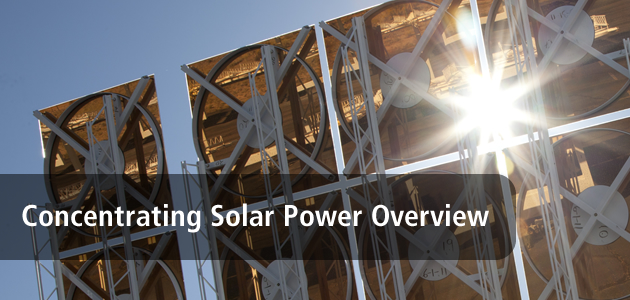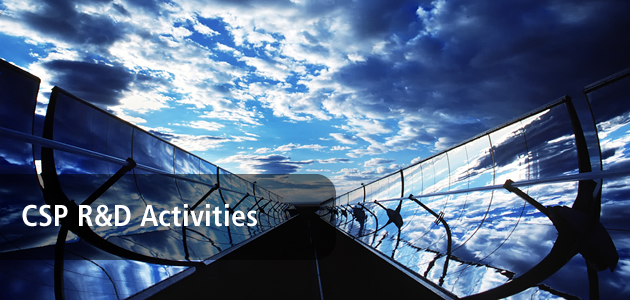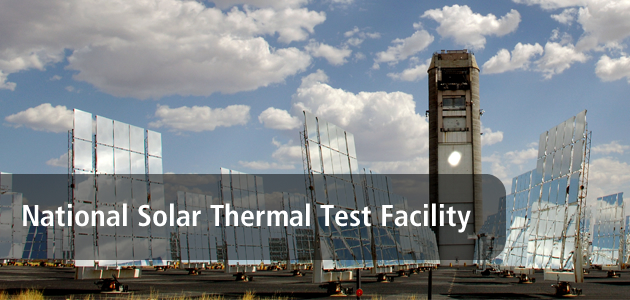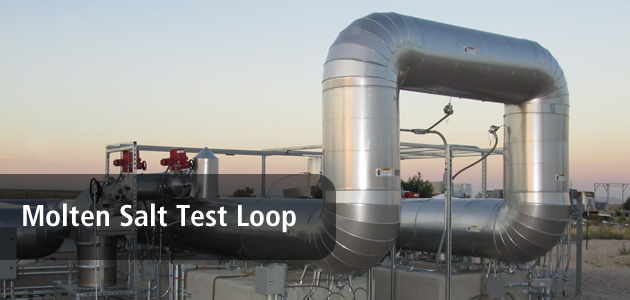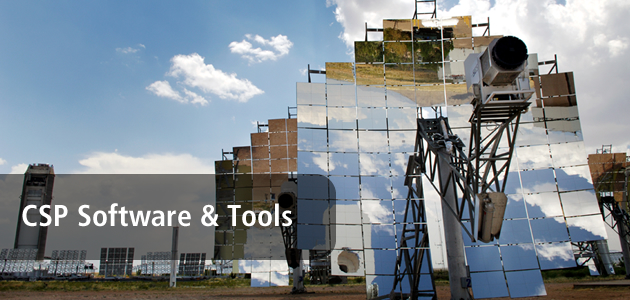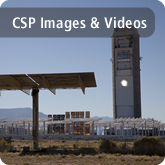 Concentrating Solar Power
Concentrating Solar Power
Concentrating solar power (CSP) uses arrays of mirrors to concentrate large amounts of heat by focusing sunlight from a large field into a much smaller area. The concentrated heat energy is then used in a conventional power cycle or other heat engine to produce mechanical power that drives an electrical generator. The heat can also be efficiently and cheaply stored to produce electricity when the sun is not shining. Typically, CSP power plants generate large amounts of power (hundreds of megawatts) for utility-scale applications.
The Concentrating Solar Technologies Department develops solar thermal electric technologies for the DOE Solar Thermal Electric Program. Working in conjunction with the Photovoltaics Systems Department and the National Renewable Energy Laboratory, the department has developed parabolic trough, power tower, and dish/engine technology to support virtually every major solar thermal electric activity in the United States. In conjunction with industry, our staff have had pivotal technical and programmatic roles in the Solar Two power tower project; dish/engine joint venture programs with SAIC, Allied Signal, and Boeing; and in the development of advanced concepts, components (heliostats, solar receivers, and engines), and systems. We also support a range of systems analyses, market identification studies, and international cooperative projects (through the International Energy Agency (IEA) working group SolarPACES), conducted in cooperation with industry partners.
Learn More
Sandia works with its partner laboratory, the National Renewable Energy Laboratory (NREL) located in Golden, CO, in a “virtual laboratory” concept called SunLab. SunLab supports the DOE Concentrating Solar Power Program and U.S. CSP industry by providing: R&D on CSP components and systems, advanced component development, component and systems analysis, test and evaluation, and supporting market development activities.
Learn More
 ECIS Highlights
ECIS Highlights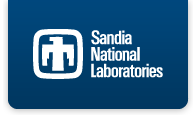


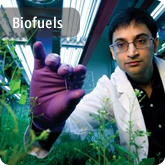










 RSS
RSS Google+
Google+ Twitter
Twitter Facebook
Facebook LinkedIn
LinkedIn YouTube
YouTube Flickr
Flickr